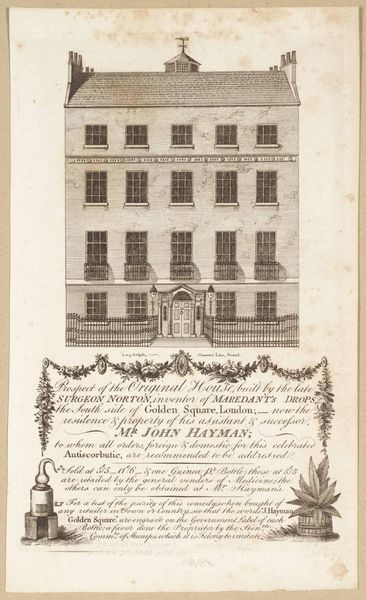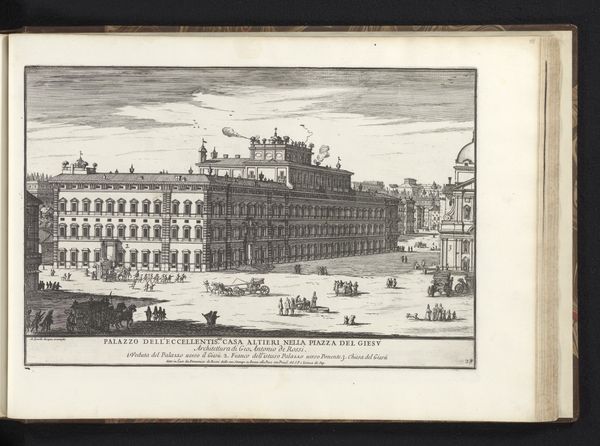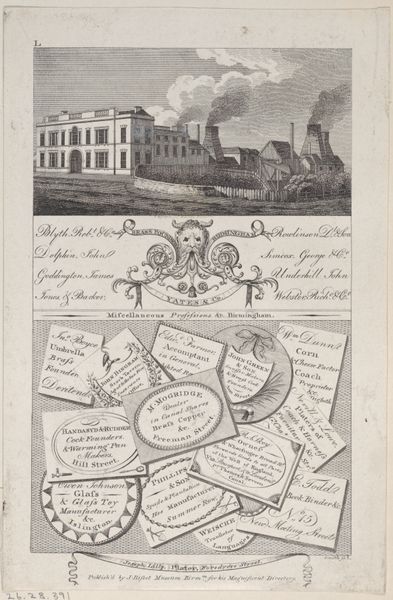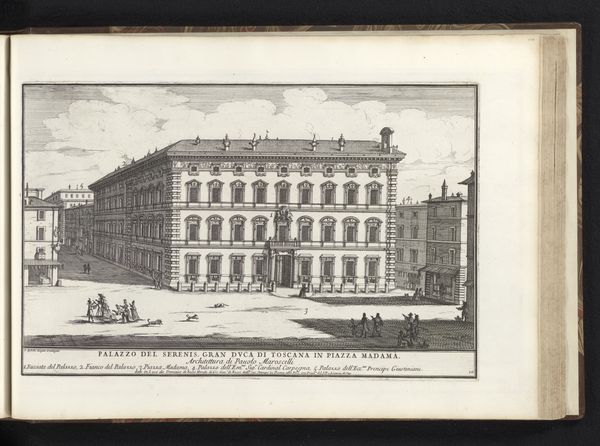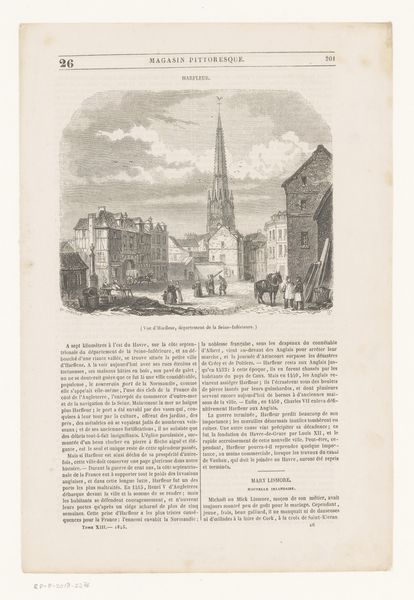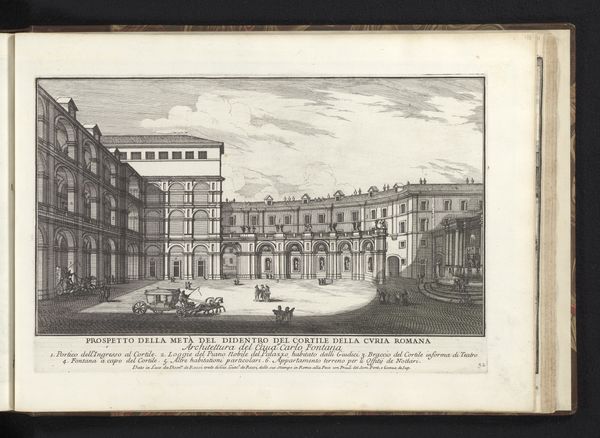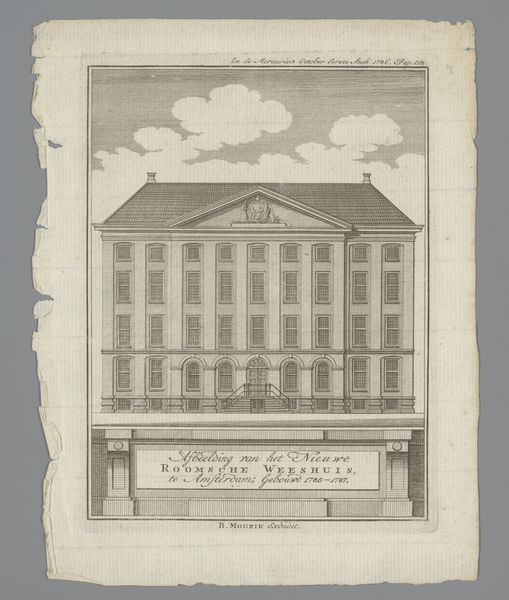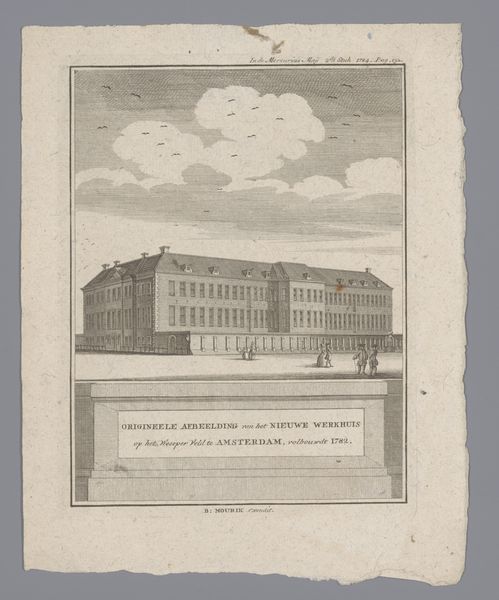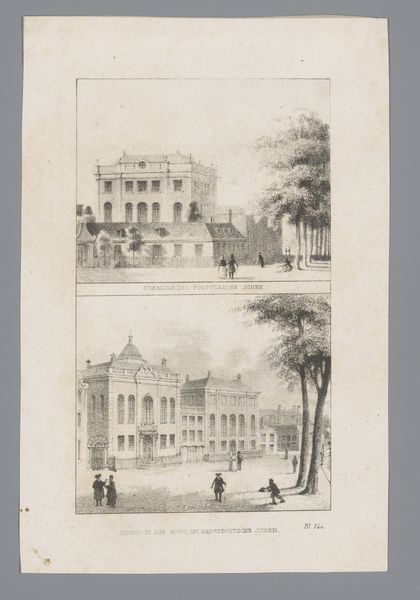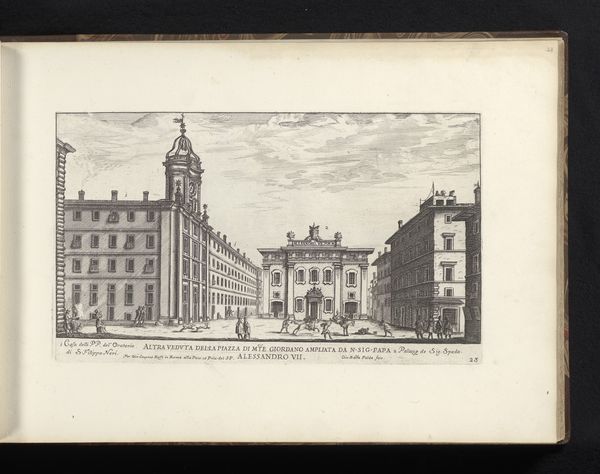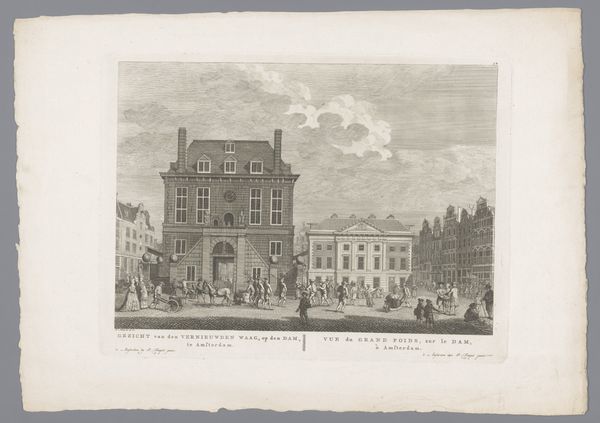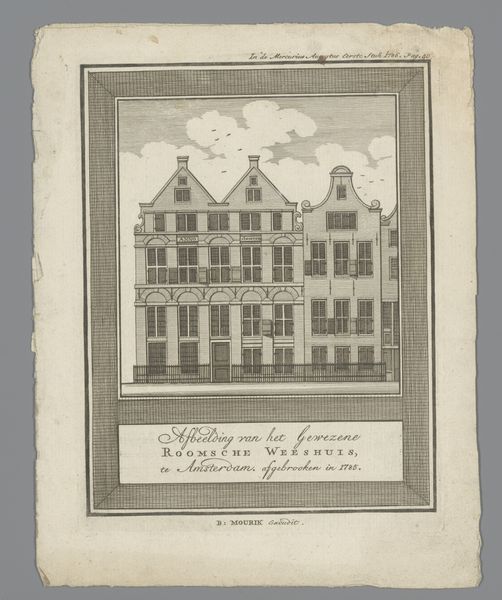
Tradecard of S. W. Benedict, Watchmaker, No. 5 Wall Street, New York 1846
0:00
0:00
drawing, print, etching, engraving
#
drawing
# print
#
etching
#
landscape
#
19th century
#
cityscape
#
genre-painting
#
engraving
Dimensions: sheet: 9 13/16 x 5 11/16 in. (24.9 x 14.5 cm)
Copyright: Public Domain
Curator: This engraving, dating from 1846, served as a tradecard for S. W. Benedict, a watchmaker located at No. 5 Wall Street in New York. What strikes you first about this piece? Editor: It's intensely detailed, almost overwhelming, but that’s kind of charming. I get this sensation of being utterly transported back to that moment in 19th century New York. A simpler, maybe more chaotic time? Plus, that old-fashioned script is totally my aesthetic. Curator: Yes, the density is quite characteristic of the period. These tradecards often aimed to convey status and detail, so the iconography had to be comprehensive. See how the cityscape subtly incorporates Trinity Church, an immediately recognizable landmark associated with the economic activities on Wall Street, into its composition? The horse statue and gentleman by the clock feel equally iconic. Editor: Totally, those two characters with the clocks feel significant, like the timepiece riding the horse stands in for how precious, luxurious, but potentially ephemeral and out of control time feels, and the dapper man reminds me that being on time is about discipline, duty, showing up as a solid member of the city... though the whole things feels very gendered, doesn't it? Did ladies need time or were they meant to ignore it? Curator: These details, and the very layout of the card, point to certain aspirations and expectations, for Mr. Benedict and for his potential clientele. There is something rather self-assured, almost assertive, about its presentation, isn't there? These details were meticulously selected. The language also plays its part in establishing trust. Editor: For sure. So what cultural needs was S.W. Benedict trying to meet in the people who lived in the city in 1846? Was it mostly about helping merchants regulate trade? Curator: Doubtlessly. The location, close to the exchange, signifies reliability to mercantile professionals dependent on accuracy for commerce. The detailed visual language –the rendering of the buildings, Trinity Church – signals a sense of place and prestige, and the statue-topped clock signals an elevated quality of goods and services. Editor: It's all so wonderfully intentional. Almost like an antique version of curated content... Thanks for making the time fly, I didn't even realize we are done here! Curator: Thank you, time well spent together in a journey of our collective memory and association.
Comments
No comments
Be the first to comment and join the conversation on the ultimate creative platform.
